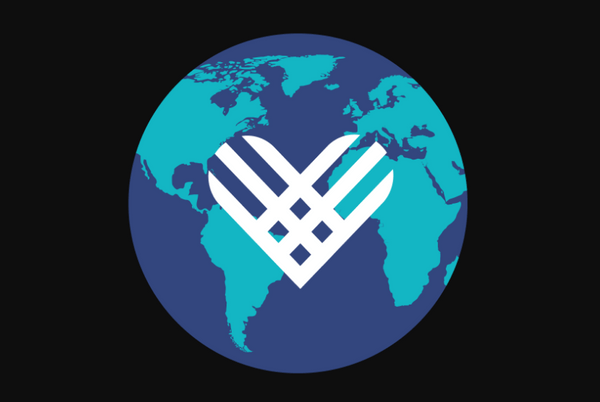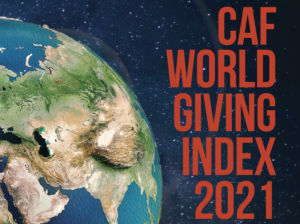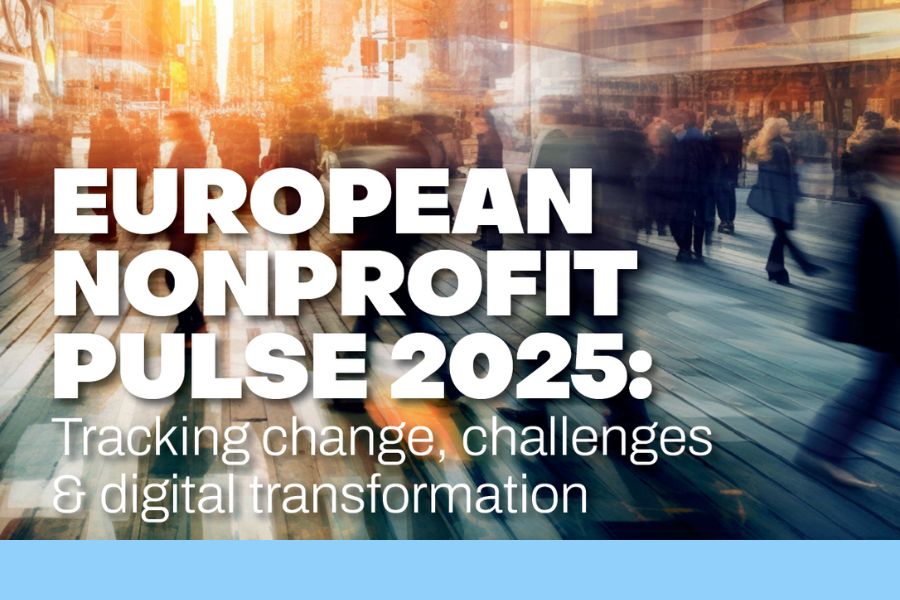
Blog: What is Lead Community Fundraising and why is it important now?
August 4, 2021
GivingTuesday opens doors for grassroots leaders to join innovative learning & fellowship community
August 16, 2021The CAF World Giving Index 2021 unveils record highs for giving, but a closer look reveals a Southeast-West divide for the trajectory of giving in Europe. In Fundraising Europe, we take a closer look at the findings, speaking with fundraising experts about why this might be.
Collating the views of more than 1.6 million people globally since 2009, the Charities Aid Foundation’s World Giving Index (WGI) tracks three types of giving behaviours; donating, helping a stranger and volunteering.
The most recent report – a special pandemic edition covering 114 countries – reveals that generosity reached new heights in 2020, with over half of the adult public (55%) saying they had helped a stranger. Added to that, more people had donated money in 2020 than at any time in the last five years, amounting to almost one third (31%) of the 121,000 people surveyed.
These findings reassert confidence in people’s kindness and humanity in times of crisis. And yet, the headlines disguise some substantial changes in the positioning of countries within the index. It highlights the impact of lockdowns on charitable giving in many major economies including America and Canada, which have seen sharp falls in the rankings. Indonesia maintains its position at the top of the index, now joined in the top ten nations by countries like Kosovo, Nigeria and Ghana.
A tale of two halves for Europe
For Europe, it is a tale of two halves. While Western Europe has seen its average overall WGI score fall to 29% – its lowest level since 2016, countries in Eastern and Southeastern Europe have risen to record highs, at an average of 34%.
Catherine Mahoney, research manager at the Charities Aid Foundation, says:
“Charities Aid Foundation’s research into giving during this pandemic has demonstrated an immense willingness by people to give and help one another on a global scale, particularly when it comes to helping a stranger.”
However, Mahoney cites ‘significant differences’ in giving behaviours in Eastern and Southeast Europe compared to Western Europe.
She adds: “Some of these findings repeat patterns that we have seen over the years, although some have been amplified through the economic shock of successive lockdowns.
“It is notable that the list of the most generous countries has changed substantially in 2020 with European countries that routinely feature in the top 10 – Ireland, the Netherlands and the UK, all falling in this year’s rankings.”
Lithuania for example has risen up out of the bottom 10 countries of the index for the first time – it is now positioned 74th for donating money and 65th for volunteering. This comes as the COVID-19 crisis is said to have revealed ‘huge gaps and inefficiency’ in the healthcare sector in the nation, inspiring more people to give.
Giedrė Šopaitė-Šilinskienė, head of the donation portal Aukok.lt, reports that record sums were donated through the platform in 2020, with almost half of that income directed to five aid projects.
She says: “Those funds provided support to the most sensitive groups in the face of COVID-19 – children from vulnerable families, the isolated elderly, impoverished individuals and, of course, medics who fought against the virus.
“The crisis made people feel greater empathy for those in need and many people who had never donated before started giving. When the pandemic took hold, there was a sense of solidarity in the air. Many NGOs report that higher donation rates remain even this year, when everyone is more used to living with COVID.”
Lithuanian nonprofits are developing better skills for communicating their cause, and that makes them more visible. Individuals and business are better informed about the social impact that the NGO sector has on lives across the country.
Similarly, in Romania, more than 80 NGOs came together during the early stages of the pandemic to raise funding for and provide protective gear and medical equipment worth €13.95 million to equip the nation’s hospitals during the coronavirus outbreak.
Elsewhere, Georgia, Bulgaria, Serbia and Ukraine were among those nations who saw the biggest gains, while Switzerland, Ireland, Netherlands, Belgium, Germany and Malta all dropped far down the rankings. The latest report sees France, Italy, Belgium and Portugal all sitting towards the base of the index.
With far fewer people passing through towns and cities of Western Europe during periods of heavy lockdown, the absence of commuters and shoppers, perhaps it is less surprising that the most considerable falls in terms of giving behaviour were often seen in the proportion of people helping a stranger, in contrast with the global trend for growth.
Indeed, when it comes to donating money specifically, the United Kingdom, Iceland and The Netherlands remain in the top 10 nations globally, positioned 6, 7 and 8 respectively. Still, they have each seen a drop in the proportion of people making donations.
Interpreting the results
The results make interesting reading. However, René Bekkers, Professor of Philanthropy, at the Faculty of Social Sciences, Vrije Universiteit, Amsterdam believes it’s also worth bearing in mind that this year’s survey is based on a change to a single mode of data collection, telephone, for all countries.
“Since 2008 we have had a law in the Netherlands that forbids commercial companies to randomly call people. This means that the group of people called must be part of a preselected group so the new rankings are probably not reflecting changes in reality, but may be a result of the change in the survey’s mode of fieldwork. This may go for other countries in Western Europe, where the dominant mode for surveys has also been online for some time.
“The Netherlands’ new position in the ranking then could be due to the change in the mode of data collection. It is unlikely there has been a sudden decline in the proportion of the population giving to charitable causes in the Netherlands – in our Giving in the Netherlands study for example, we have been seeing a decline in the proportion of households that give to charitable causes for some time.”
Like the Netherlands, Germany also fell down the rankings, and is now placed 85th. Some of CAF’s findings also differ to what’s being reported in-country. This is for a variety of reasons, says chair of the German Fundraising Association Martin Georgi, including differences in methodologies, sample sizes, and timing of surveys, as well as a general lack of in-depth reporting in Germany on fundraising and volunteering.
This last point has led the German Fundraising Association to partner with various research efforts and studies over the past year, and it has now set up a working group on reporting to help develop more accurate and dependable figures on the various types of involvement in civil society.
On CAF’s ranking of Germany for the proportion of individuals donating, Georgi says:
“The Index figure of 34% for financial donors in the CAF survey looks credible and is even a bit higher than other figures which come out at 30% or less. The number of private donors in Germany has decreased continuously over the past years and it is a major challenge for fundraisers to find younger donors to replace older ones as they die or stop giving due to age. On the other hand, the amount raised by fundraising has continuously grown due to an increase in donation size.
“Crisis times are generally good fundraising times, and the pandemic in 2020 was no exception in Germany: larger and medium-size organisations with established databases and existing fundraising programmes that maintained or increased their fundraising activities via mail, telephone, and online generally did well or very well, some even registering double digits percentage increases in income. Some smaller organisations struggled, particularly those dependant on live events or charity sales and unable to transfer these easily online or quickly find other sources of income.”
With Ireland also among those nations falling down the rankings (now in 26th place), CEO of Charities Institute Ireland, Liz Hughes, says she was surprised initially by the findings, largely because many nonprofits reported a considerable increase in Irish giving. However, she recognises the challenges of fundraising last year, and the impact of restrictions on the public, saying:
“As we all know, 2020 was a remarkable year for the sector and Charities Institute Ireland’s members were time and time again struck by the financial generosity of the Irish people who donated online in record numbers. But the cancellation of many community events as well as the lack of religious services meant that opportunities to give were much reduced.
“The pandemic had a negative impact on our older citizens as we opted to cocoon them from the threat of COVID. Many of our charity and community organisations depend on this inspiring cohort of individuals to act as volunteers, but this was not an option during the crisis. And it may take some time to re-engage and indeed recruit new volunteers to support our sector. The restrictions that were in place in Ireland very much impacted our ability to volunteer and to help a stranger and I would hope that Ireland will return to a top 10 placing next year.”
Commenting on why other parts of Europe may have seen growth, Boris Strecansky, from the Center for Philanthropy in Bratislava, Slovakia says it may be important to distinguish between the short-term impact of COVID and the longer-term trends in the two regions, with the changes seen perhaps a short-term impact superimposed onto these deeper trends. If this is the case, he says, it may be more useful to direct the focus onto why the COVID crisis played out differently in giving behaviour in these two regions.
“The difference in giving behaviour may seem surprising at a first glance, but there may be several factors and mechanisms contributing to the puzzle, suggesting that what we see is not contradictory, but an alignment. In the Central & Eastern Europe /Southern Eastern Europe (CEE/SEE) region people may well have sensed early on the urgency to act and compensate for the government failure. But there may also be more to it.
He points to three possible reasons for the differences highlighted in the report: differing levels of trust in governments, socio-cultural factors shaping behaviour such as the role of religion, and the cultures of individualism in Western Europe and collectivism in CEE/SEE, and different nature of the societal response to COVID between the first and second waves.
On trust in government, he says:
“Trust in government has been declining in the developed world (including Western Europe) since the global financial crisis. However, the level of mistrust may vary greatly between Western and CEE/SEE countries. Some countries (including the Nordics) have higher trust in government than others (such as Italy and Spain).
“It can be hypothesised that the populace of Western European countries may have relied more on the power of the state than the CEE/SEE populations that have experienced the collapse of a dysfunctional welfare state and its replacement by a neoliberal laissez-fair based system with heavy social and economic consequences. Thus, this collective experience could trigger the spontaneity of the civil society response during the first wave of COVID expressed by self-help, donations or volunteering and indeed be an expression of low confidence in the ability of state/government to act effectively.”
Also commenting on the differences between regions highlighted in the report, Eduard Marcek, president of the European Fundraising Association and head of the Slovak Fundraising Centre, says:
“Even before the pandemic set in, charitable giving was massively on the rise in Central and Eastern Europe, largely driven by the growth in online fundraising and use of social media channels. We are hugely reliant on online channels in a way that many more developed fundraising nations simply aren’t. Our national NGOs have lower budgets – in most cases they simply can’t afford to send out mail packs, to host events or go face-to-face. We needed cheap and creative solutions, and so digital channels were widely adopted for fundraising. The pandemic only accelerated this digital shift.
“What’s more, with minimal support from government funding and limited health provisions, there was a sense of urgent need among the public; we all had to get involved and act to protect our communities and loved ones. Still, it’s hugely encouraging to see evidence of growth in giving where it’s so desperately needed.”
Bearing all of this in mind, only time will tell if future editions of the study will see a return to the more traditional positioning and rankings within the World Giving Index or whether this is indeed a new shape for giving in Europe.
Related news:
Photo by Elizabeth Lies on Unsplash





